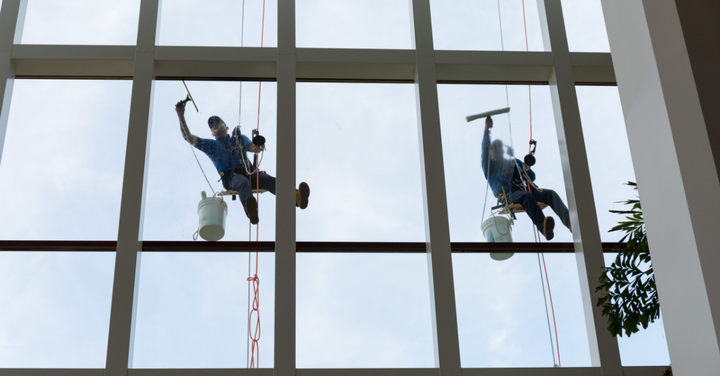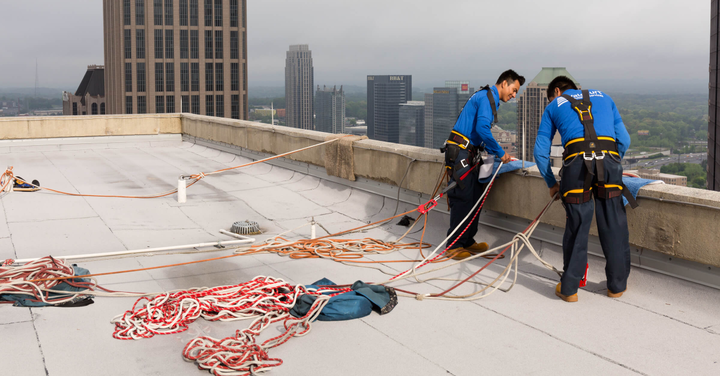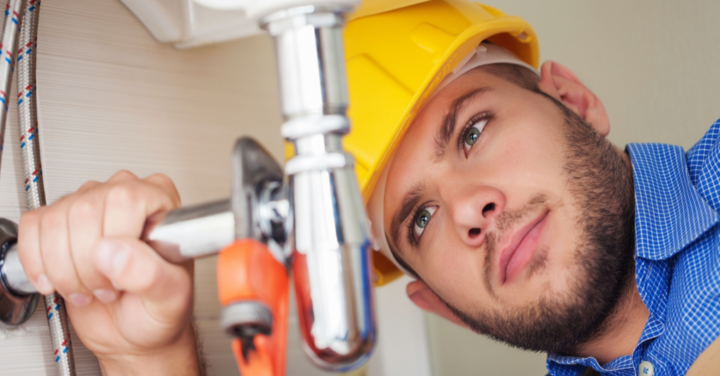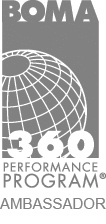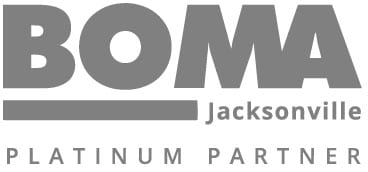Running and managing commercial properties requires specialized care and attention, especially building maintenance and repairs. Routine and emergency facilities maintenance and repair services remain in high demand. Maintenance collaboration and service coordination can help ensure facilities are properly managed and maintained when things are good and when things aren’t so good. Valcourt does all the work of facilities management and commercial building maintenance using their staff of highly skilled and experienced professionals. They work to provide services for commercial buildings and high-rise building maintenance services that have remained in high demand for many years.
According to the U.S. Energy Information Administration’s (EIA) 2018 Commercial Buildings Energy Consumption Survey, an estimated 6 million U.S. commercial buildings contained 97 billion square feet total as of 2018. The number of commercial buildings requiring routine maintenance and upkeep increased by 6%, and commercial square footage increased by 11% since the prior CBECS in 2012. The number of commercial properties has continued to grow, though some estimate at a slower rate than in previous years. People spend nearly 80–90% of their time in commercial buildings, whether for work, errands, or dwelling. Building managers constantly look for ways to improve maintenance and upkeep operations to make their lives easier and to improve the lives of workers, tenants, and the general public. Here is why commercial building maintenance companies remain in high demand in 2022.
Damages Caused by Neglected High Rise and Commercial Building Maintenance
Many issues can arise when building maintenance and repairs get ignored. Increased risk of property damages, injuries, fires, collapses, leaks, electrical problems, system failures, and more can arise and quickly worsen without proper inspection and maintenance of commercial buildings and properties. Severe injuries and even death can occur from seemingly minor issues that go unchecked and unaddressed for long periods, as highlighted by a 2019 article by the New York Post:
A woman was killed in a freak accident in late 2019 when a chunk of building facade fell off a Midtown tower and struck her. Police pulled city building records which showed that the property was cited a few months earlier for “failure to maintain exterior building facade and appurtenances.” Building inspectors also noted “damaged terra cotta at areas above 15th floor in several locations which pose a falling hazard for pedestrians.” Management never did the work necessary to correct the issue and repair the facade, leading to some falling away and killing pedestrians as they passed by below.
These are often called “freak accidents” because they happen at random. Still, they occur more frequently as building maintenance continually falls to budget cuts, poor financial planning, and inefficient commercial building management. When building management needs arise, it is time to take swift action.
Common Areas of Concern For Commercial Building Structure Violations
Keeping up with commercial building management and repair often comes down to knowing and following codes and regulations that facility management teams must follow. Building codes can be somewhat of a double-edged sword for commercial property owners.
On the one hand, they require time, money, labor, and resource to follow and maintain. On the other hand, building codes help provide a guideline to ensure commercial properties are properly maintained and remain safe.
Watching for damage and degradation signs is crucial building maintenance and management. Here are a few of the most common areas facility management teams should focus on when dealing with commercial property maintenance:
Means of Egress
The means of egress building code is a vital one for overall property safety and security. It deals with the number of exits a commercial building must have, the minimum width of aisles, hallways, doorways, and other evacuation route specifications. Maintenance in these areas is critical and a top priority.
Air Sealing of Penetrations
All commercial buildings have entry and exit points for plumbing, wiring, and other systems. The proper sealing of these points relates to the energy codes needed for commercial buildings. It is also important to control air and water penetration and ensure air quality remains high for those inside the building.
Fire Blocking
Fire blocking is another vital aspect of maintenance and upkeep within commercial properties as it helps prevent the spread of fire through the concealed, open cavities in the building.
Flashing Install
Commercial roof flashing is also essential and needs proper installation and regular maintenance. Flashing on roofs and wall structures keeps the building dry and durable, preventing water intrusion, corroding, decay, and moisture damage.
Erosion Control
Building codes also have considerations for maintaining proper erosion control around commercial properties. Rainwater from downspouts, as well as flow from neighboring property and natural lands, must be managed to ensure foundations are not compromised. Careful monitoring and fast repairs are essential for structural integrity.
Drainage Controls
Many state regulations and building codes state that all commercial roofs, decks, balconies, and other structures should have a properly installed and maintained drainage system. Drainage control can often involve secondary or emergency overflow drain systems that must be maintained and repaired regularly.
Handrail Height or Spacing
Having the proper handrail and guard railing height and spacing is integral to building safety and is a common location for maintenance repairs and upgrades and areas of safety concerns.
Stair Rise and Run
Likewise, stairs must be maintained and kept in good condition, ensuring no cracks or chips, no missing steps, and all stairs remain spaced and aligned correctly.
ADA Compliance
The final area that many commercial property managers must focus on, with the help of facility maintenance service companies, is ensuring adherence to ADA compliance regulations. From wheelchair accessibility to keeping aisles and hallways safe to navigate, building managers must ensure all visitors are safe while visiting or using the property.
Types of Commercial Property Maintenance FM Teams Need to Consider When Planning Services
There are two primary areas of commercial property management that facility maintenance teams need to focus on- Hard Facilities Management (Hard FM) and Soft Facilities Management (Soft FM).
- Hard FM deals with physical assets related to the building and includes things such as plumbing, wiring, facade, sidewalks, elevators, heating and cooling, windows and doors, and the like.
- Soft FM focuses on the less tangible side of facilities management and includes tasks performed by people on the building, such as custodial services, building security, landscaping, trash and cleaning services, and the all-important repair and maintenance work services.
Specific Commercial Property Maintenance Areas of Concern
Proper management, repair, and maintenance of commercial buildings must not get overlooked. To do so can be disastrous and lead to significant financial loss for property owners and managers. According to a June 2022 release from NPR, “A Florida judge has approved a $1.2 billion settlement for unit owners and families of those who died in the collapse of a condo tower in Surfside last year. It was finalized one day before the anniversary of the disaster in which 98 people died.” This catastrophe is just one example of how putting off maintenance and repair work can lead to catastrophic problems. Building managers and property owners can avoid these issues and significantly reduce their risks of costly damages by including the following areas in their routine inspection, maintenance, and repair routines:
- High Rise Window Cleaning – Maintinting windows involved more than just keeping up with washing and cleaning. Windows should get inspected for cracks and loose glass panes often and will also need checks for caulking, sealants, shade coats, and more.
- Waterproofing – A large part of building repair and facility management is envelope maintenance. Waterproofing roofs, sealing building facades, and performing moisture and airflow checks all play into keeping a building waterproof and tight.
- Rapid Leak Investigation and Repair – Small leaks can quickly grow into big leaks and cause significant building integrity and safety problems. Building maintenance experts’ rapid detection and repair services are critical to keeping structures safe.
- Fall Protection Systems & Roof Anchors – Commercial buildings can be dangerous to work on, so fall protection systems must be in good working order. Roof anchor systems must be code compliant and inspected regularly.
- Safety Systems – Vital safety systems such as fire escapes, stairwells, entry and exit points, and so forth must be well maintained. All systems must be in good condition, code compliant, accessible, and easy to use without undue risks or concerns.
- Facade Maintenance & Repair – As already seen, neglecting facade maintenance and storage can lead to expensive and even deadly consequences. In commercial building facades, cracks and loose mortar need quick and professional servicing.
Commercial building owners and managers have a lot to keep track of and monitor, and on-demand building repair services can help make the entire process easier. Keeping these critical areas at the top of building maintenance and repair checklists can save time and money in the long run and ensure commercial properties stay safe and operational.
Partner With the Best Commercial Building Maintenance Company Today
There is no denying the importance of proper commercial building maintenance and repair services and what can go wrong when minor issues are allowed to grow into significant problems. Investing in reliable, high-quality commercial property maintenance services is always worthwhile. Contact A1orange today to get started and to see how quality commercial property maintenance and repair can make a difference for your business or property.


